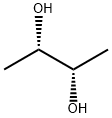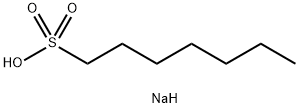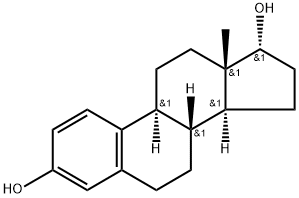(1S,2S,3R,5S)-(+)-2,3-Pinanediol
Synonym(s):(+)-2-Hydroxyisopinocampheol;(1S,2S,3R,5S)-2,3-Pinanediol;(1S,2S,3R,5S)-2,6,6-Trimethylbicyclo[3.1.1]heptane-2,3-diol;[1S-(1α,2α,3α,5α)]-2,6,6-Trimethylbicyclo[3.1.1]heptane-2,3-diol
- CAS NO.:18680-27-8
- Empirical Formula: C10H18O2
- Molecular Weight: 170.25
- MDL number: MFCD00077851
- EINECS: 606-096-6
- SAFETY DATA SHEET (SDS)
- Update Date: 2024-12-09 16:05:57

What is (1S,2S,3R,5S)-(+)-2,3-Pinanediol?
Chemical properties
white to light beige crystalline powder, crystals
The Uses of (1S,2S,3R,5S)-(+)-2,3-Pinanediol
(1S,2S,3R,5S)-(+)-2,3-Pinanediol is a bicyclic monoterpene diols that has been shown to induce differentiation of S91 melanoma and PC12 pheochromocytoma cells and thus provide possible therapeutic and sunless tanning use. It is also used in the transformation of isopinocampheol and caryophyllene oxide.
The Uses of (1S,2S,3R,5S)-(+)-2,3-Pinanediol
(1S,2S,3R,5S)-(+)-2,3-Pinanediol is a bicyclic monoterpene diols that has been shown to induce differentiation of S91 melanoma and PC12 pheochromocytoma cells and thus provide possible therapeutic and sunless tanning use. It is also used in the transformation of isopinocampheol and caryophyllene oxide.
The Uses of (1S,2S,3R,5S)-(+)-2,3-Pinanediol
(1S,2S,3R,5S)-(+)-Pinanediol can be used as a chiral reagent in the synthesis of homochiral α-hydroxyketones and in the resolution of prolineboronate esters.
Properties of (1S,2S,3R,5S)-(+)-2,3-Pinanediol
| Melting point: | 57-59 °C(lit.) |
| Boiling point: | 239.9°C (rough estimate) |
| alpha | 8.5 º (c=6.5, toluene) |
| Density | 0.9409 (rough estimate) |
| refractive index | 1.4494 (estimate) |
| Flash point: | >230 °F |
| storage temp. | Keep in dark place,Sealed in dry,Room Temperature |
| solubility | Chloroform, Methanol (Slightly), Toluene (Slightly) |
| form | Crystalline Powder, Crystals or Mass |
| pka | 14.68±0.60(Predicted) |
| color | White to light beige |
| optical activity | [α]20/D +8.5°, c = 6.5 in toluene |
| BRN | 1853591 |
| CAS DataBase Reference | 18680-27-8(CAS DataBase Reference) |
| NIST Chemistry Reference | (1S,2s,3r,5s)-(+)-pinanediol(18680-27-8) |
Safety information for (1S,2S,3R,5S)-(+)-2,3-Pinanediol
| Signal word | Warning |
| Pictogram(s) |
 Exclamation Mark Irritant GHS07 |
| GHS Hazard Statements |
H315:Skin corrosion/irritation H319:Serious eye damage/eye irritation H335:Specific target organ toxicity, single exposure;Respiratory tract irritation |
| Precautionary Statement Codes |
P271:Use only outdoors or in a well-ventilated area. P280:Wear protective gloves/protective clothing/eye protection/face protection. |
Computed Descriptors for (1S,2S,3R,5S)-(+)-2,3-Pinanediol
New Products
4-Fluorophenylacetic acid 4-Methylphenylacetic acid N-Boc-D-alaninol N-BOC-D/L-ALANINOL Tert-butyl bis(2-chloroethyl)carbamate 3-Morpholino-1-(4-nitrophenyl)-5,6-dihydropyridin- 2(1H)-one Furan-2,5-Dicarboxylic Acid Tropic acid S-2-CHLORO PROPIONIC ACID ETHYL ISOCYANOACETATE 2-Bromo-1,3-Bis(Dimethylamino)Trimethinium Hexafluorophosphate (6-METHYL-[1,3]DITHIOLO[4,5-b]QUINOXALIN-2-ONE INDAZOLE-3-CARBOXYLIC ACID 4-IODO BENZOIC ACID (2-Hydroxyphenyl)acetonitrile 4-Bromopyrazole 5,6-Dimethoxyindanone 2-(Cyanocyclohexyl)acetic acid 4-methoxy-3,5-dinitropyridine 2-aminopropyl benzoate hydrochloride 1-(4-(aminomethyl)benzyl)urea hydrochloride diethyl 2-(2-((tertbutoxycarbonyl)amino) ethyl)malonate tert-butyl 4- (ureidomethyl)benzylcarbamate Ethyl-2-chloro((4-methoxyphenyl)hydrazono)acetateRelated products of tetrahydrofuran








You may like
-
 18680-27-8 (1S,2S,3R,5S)-(+)-Pinanediol, 98% 99%View Details
18680-27-8 (1S,2S,3R,5S)-(+)-Pinanediol, 98% 99%View Details
18680-27-8 -
 (1S,2S,3R,5S)-2,3-Pinanediol CAS 18680-27-8View Details
(1S,2S,3R,5S)-2,3-Pinanediol CAS 18680-27-8View Details
18680-27-8 -
 (1S,2S,3R,5S)-(+)-2,3-Pinanediol CAS 18680-27-8View Details
(1S,2S,3R,5S)-(+)-2,3-Pinanediol CAS 18680-27-8View Details
18680-27-8 -
 (1S,2S,3R,5S)-(+)-Pinanediol CAS 18680-27-8View Details
(1S,2S,3R,5S)-(+)-Pinanediol CAS 18680-27-8View Details
18680-27-8 -
 1975-50-4 98%View Details
1975-50-4 98%View Details
1975-50-4 -
 2-HYDROXY BENZYL ALCOHOL 98%View Details
2-HYDROXY BENZYL ALCOHOL 98%View Details
90-01-7 -
 14714-50-2 (2-Hydroxyphenyl)acetonitrile 98+View Details
14714-50-2 (2-Hydroxyphenyl)acetonitrile 98+View Details
14714-50-2 -
 118753-70-1 98+View Details
118753-70-1 98+View Details
118753-70-1